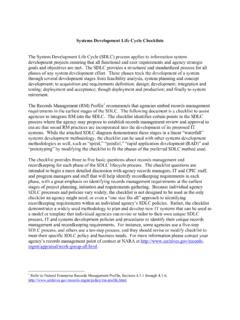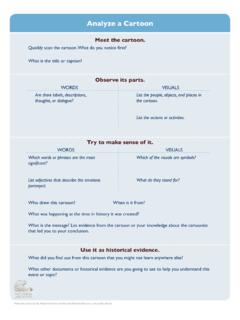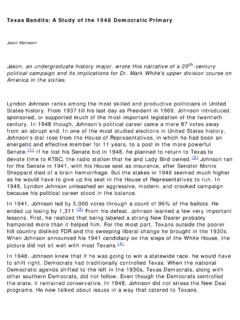Transcription of Reviews of U.S. Army War Crimes Trials in Europe 1945-1948
1 NATIONAL ARCHIVES MICROFILM PUBLICATIONSPAMPHLET DESCRIBING M1217 Reviews of ArmyWar Crimes Trials in Europe1945- 1948 NATIONAL ARCHIVES TRUST FUND BOARDNATIONAL ARCHIVES AND RECORDS ADMINISTRATIONWASHINGTON: 1987 The records reproduced in the microfilm publicationare fromRecords of Army Commands, 1942-Record Group 338 Reviews OF ARMYWAR Crimes Trials IN EUROPE1945-1948On the five rolls of this microfilm publication are repro-duced the Reviews and recommendations pertaining to the 489 warcrimes cases tried by Army courts and commissions betweenApril 1945 and July 1948 . The records filmed are part of RecordGroup 338, Records of Army Commands, 1942^.BackgroundJurisdictions and CasesEn Europe , the United States participated in war crimestrials under three jurisdictions: that of the InternationalMilitary Tribunal CIMT), that of the military tribunals atNuernberg, and that of the Army courts.
2 General authorityfor the proceedings of all three jurisdictions derived from theDeclaration of German Atrocities (Moscow Declaration), releasedNovember 1, 1943, which expressed Allied determination to arrestand bring to justice Axis war criminals. Brief descriptions ofthe war Crimes Trials records in the National Archives are in theRecord Group Statement near the end of this introduction. Micro-film and other publications available at the National Archivesand Records Service are mentioned in the Related Records section,which concludes the Military TribunalThe IMT tried 24 major Nazi war criminals and a number oforganizations in 1945 and 1946. Specific authority for in the IMT is found in Executive Order 9547 ofMay* 2, 1945 , which authorized Supreme Court Justice Robert to represent the United States in war Crimes mattersand to act as Chief of Counsel; the London Agreement of August8, 1945 (as amended by the Berlin Protocol of October 6, 1945 ),in which the United States, France, the United Kingdom, and theSoviet Union agreed to hold the IMT; and the IMT Charter (anannex to the London Agreement), which outlined the rights andobligations of defendants, judges, and ,&.
3 Military* Tribunals at NuernbergFrom 1946 to 1949, military tribunals at Nuernbergtried 185 individuals in 12 separate proceedings grouped ac-cording to type of crime or organization. Specific authorityfor the tribunals, which tried -these 12 cases, is found inAllied Control Council Law 10 of December 20, 1945 , which out-lined trial procedures patterned after those of the IMT; Exec-utive Order 9679 of January 16, 1946, which authorized theestablishment of military tribunals; Office of Military Gov-ernment for Germany ( ) (OMGUS) Ordinances 7 and 11 of Octo-ber 18, 1946, and February 17, 1947, respectively, which spelledout details of trial procedures outlined by Allied Control Coun-cil Law 10} and United States Forces, European Theater (USFET)}General Order 301 of October 24, 1946, which appointed Telford Taylor as Chief Counsel for War Crimes for the military tribunals at Army CourtsFrom 1945 to 1948 , , Army courts (military commissionsand special or general military courts) tried 1,672 individualsin 489 proceedings.
4 Specific authority for these proceedingsis found in Joint Chiefs of Staff Directive 1023/10 of July 8, 1945 , which placed responsibility for certain war Crimes trialsin Germany on the Commander, USFET. The Commander, in turn,empowered the commanding general of the Western Military Dis-trict (territory occupied by the 3d Army (Bavaria)) toappoint military courts, predominantly at the site of the formerconcentration camp Dachau, for the trial of war criminals notheard at Nuernberg. This was done in a letter on the subjectof "Trixal of War Crimes - and Related Cases" of July 16, commanding general of the Eastern Military District (terri-ntory occupied by the 7th Army (Hesse, Baden-Wuerttemberg,and Bremen)) was similarly authorized to commence war crimestrials, mainly at Ludwigsburg.
5 In order to streamline opera^tions, the Commander, USFET, revoked this division of authorityin a letter of October 14, 1946, and assigned responsibility toprosecute war criminals to the Deputy Judge Advocate for WarCrimes, USFET. Henceforth, all cases were tried at the site ofthe former concentration camp Dachau because centralization ofwar Crimes activities appeared necessary in view of the largebTody of cases and 489 cases tried by the Army in Germany can be di-vided roughly into four categories: main concentration campcases, subsequent concentration camp cases, flier cases, andmiscellaneous cases. The first category comprises 6 cases withabout 200 defendants, mainly staff members and guards at Dachau,Buchenwald, Flossenburg, Mauthausen, Nordhausen, and Muehldorfconcentration camps.
6 The second category includes about 250proceedings against approximately 800 guards and staff membersof the outcamps and branch camps of the major camps. The thirdcategory encompasses more than 200 cases in which about 600persons, mostly German civilians, were prosecuted for thekilling of some 1,200 nationals, mostly airmen. The fourthcategory consists of a few cases, including the Malmedy MassacreCase, in which 73 SS men were tried for murdering large groupsof surrendered prisoners of war; the Hadamar Case, in whicha number of Hadamar Asylum staff members stood trial for thekilling of about 400 Russian and Polish nationals; and theSkorzeny Case, in which some members of the German Armed Forceswere charged with wearing Army uniforms while participatingin the Ardennes Army Trial Reviews and RecommendationsA review and recommendation is a summary of the records ofa trial, examined by reviewers to verify that the trial was con-ducted in a legal manner and that the rights of the accusedhad not been violated.
7 These Reviews automatically followed Army-conducted mid-October 1946, Trials were conducted by the in Europe , within each Army's area of jurisdiction. Whilethe vast majority were conducted by the 3d and 7th Army Commands,a few of the early Trials were conducted by the 1st and 15th Armiesand the United States Forces in Austria. During the 1945 -46 period, Reviews and recommendations were prepared from the trial recordby the posttrial units of the Army commands convening the were reviewed by the pertinent Army staff judge advocates,and the commanding generals. Death sentences required a lastreview by the European Theater October 1946 to July 1948 , the conduct of Armywar Crimes Trials was centralized under the Deputy JudgeAdvocate for War Crimes and the Trials held at the site ofthe former concentration camp Dachau.
8 During this period reviewsand recommendations were prepared oy the Deputy Judge Advocate forWar Crimes , They were reviewed by the Judge Advocate and, fordeath sentences, the Theater DescriptionA typical review and recommendation contains paragraphs forthe following subjects: trial data and charges, summaries ofevixlence, personal information regarding the accused, evidencepresented by prosecutiuii and defense counsel, and petitions forclemency; the conclusions of the reviewer and the recommendation,eithe^ of an Army staff judge advocate or the Deputy JudgeAdvocate for War Crimes , complete the case files to which the first 227 Reviews and recommenaa-tions pertain were filed and are arranged by a two-number mailand records system employed by the European and Washington Officesof the War Crimes Branch, Office of the Judge Advocate same system is used for the Reviews and first number designates a country, and the second numberidentifies the case within the country.
9 In Case 5-37, for example,the first number represents Austria, the country in which thecrime was alleged to have been committed; and the second numberidentifies the case among the other Austrian cases tried orinvestigated between 1945 and 1948 . All of the case files inthis publication arranged by the two-number system have one of thefollowing five country designations: 5-Austria, 6-Belgium, 8-Czechoslovakia, 11-France, or remaining Reviews and recommendations are arranged byone of two modified mail and records systems. One system consistsof a sequence of numbers beginning with a triple zero, 000,followed by the number 50, 000-50. These two-number sequencesindicate concentration camp cases. A third number in this sequencestands for a main camp case.
10 Thus 000-50-2 is for the DachauConcentration Camp Case, 000-50-5 is for the Mauthausen Case,000-50-9 is for the Buchenwald Case, 000-50-37 is for theNordhausen Case, 000-50-46 is for the Flossenburg Case, and 000-50-136 is for the Muehldorf Concentration Camp subsequent proceedings to these main cases were designatedeither by adding a fourth number to the sequence such as 000-50-2-1, indicating the first subsequent proceeding to the Dachaumain concentration camp case; or using a triple zero followedby the name of the main camp and the number of the subsequentproceeding, OOQ-Buchenwald-1. The apparent difference betweenthese two methods of identifying subsequent concentration campcases is that the charges under the first method were substantiallythe same as in the main case; whereas in the second method theaccused were tried under additional the beginning of the first roll, key documents authorizingthe" Army courts to try war Crimes cases and a case listincluding the names of war criminals tried have been staff-prepared list arranged by case number and therunderby title of trial, beginning date of trial, and surnames ofdefendants in alphabetical order serves as a finding aid.



















